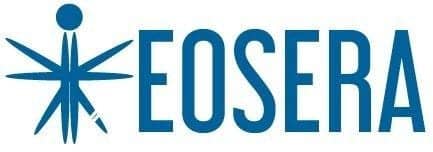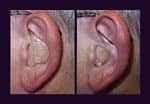If not, you should be getting ready for this “next step” in patient care
Remote hearing aid programming has been available, in different forms, for years, and there is no doubt that we will see increasingly robust solutions. The decision to implement these technologies must begin with individual professionals or at clinical sites.
Most of your colleagues are not ready for remote programming. At AudiologyNOW! 2012, 157 practicing audiologists were surveyed about their readiness for remote hearing aid programming; only 20% believe they are prepared for this technology. A similar distribution was seen among a group of 41 students. In contrast, Singh and colleagues1 reported this year that 76% of patients were moderately to extremely willing to participate remotely in an audiology appointment. Clearly, these data represent a disturbing discrepancy between what our patients want and what we are prepared to deliver. As a growing profession, should we be hesitant to consider the adoption of connected health strategies like remote hearing aid programming?
The World Health Organization (WHO) 2012 reporT2 on deafness and hearing impairment states that more than 278 million people are affected by hearing loss. Two-thirds of people with hearing loss live in developing countries and 1 in 40 have a hearing aid.2,3 In 2001, the WHO reported a need for 32 million hearing aids in these developing nations. In that year, the WHO estimated that fewer than 1 million hearing aids were actually received by patients with hearing loss.4 Today’s worldwide annual hearing aid production would accommodate only 10% of this global need.2
The need for expanded hearing healthcare in developed nations is less severe. This fact does not lessen the opportunity to benefit from connected health technologies. The Veterans Health Administration (VA), for example, in responding to dramatically growing demand for veterans’ health care, is providing telehealth services throughout the country in such specialty areas as radiology, dermatology, and mental health, allowing veterans to receive care at community outpatient clinics hundreds of miles from the closest VA hospital. In addition, thousands of veterans are connected to the VA’s patient management systems through the “My HealtheVet” program, allowing them to make appointments, access their labs and radiology reports, renew prescriptions, and communicate with staff members through online messaging systems from the comfort of their home. (See article by Dennis et al in this issue of HR.)
The development of connected technologies for diagnosis, treatment, and health and wellness management greatly diminishes the challenges associated with traveling for health care services. In the case of hearing aid fittings, for example, a remotely located hearing care technician can work with the patient to prepare for a tele-session with the hearing care professional. The technician can place headphones, insert hearing aids, or place a probe tube in the ear canal. With advances in wireless technologies, successfully connecting a hearing aid to the computer is no longer a challenge. A patient simply walks into the range of the programming computer and his/her hearing aids can be detected and uniquely identified.
Of course, the remote programming of hearing aids must be both verified for electro-acoustic accuracy and validated as a reasonable means of providing treatment with outcomes at least as good as those achieved in the clinic. Pearce et al5 described a series of case studies during which remote hearing aid adjustments were successfully accomplished. In one case, the remotely located audiology technician prepared the patient by inserting the hearing aids and probe tube for the tele-audiology hearing aid fitting. The remote audiologist adjusted the hearing aid parameters and verified the hearing aid acoustic response using the manufacturer’s fitting software. In their second relevant case study, a patient living in a remote community required hearing aid adjustments. The audiologist, located several hours away in the nearest city, completed an interview using videoconferencing software and remotely adjusted the hearing aid to successfully resolve the patient’s complaints. These are two successful illustrations of integrating remote hearing aid programming and best clinical practice.
Tele-audiology Today
This concept of remote hearing aid programming may seem abstract or futuristic; however, the ability to remotely program hearing aids has been available for several years. In 2009, we used software to view an audiologist’s computer desktop in South Africa. One of the authors (JG) used this connection to control the remotely located computer and assist in successfully fitting a patient’s hearing aid. At the time, we struggled with issues related to quality of the Internet connection. Even today, the software packages used for viewing and controlling a remote computer require a robust online connection.
In 2010, Starkey Hearing Technologies introduced a technique for remote hearing aid programming called “T2 OnDemand.” This system uses standardized acoustic touch tones from any telephone, in a specified combination, to make adjustments to the hearing aid. The range of adjustments is limited to those most commonly made (eg, overall gain adjustment and high- or low-frequency adjustments). In the case of T2 OnDemand, problems associated with a less-than-optimal Internet connection were eliminated as a telephone connection is utilized and no computer is needed to remotely program the hearing aid.
Both remote desktop and T2 OnDemand Programming have limitations. Fitting and trouble-shooting hearing aids via a remote desktop will always require a robust Internet connection between two computers, and remote programming with touch tone phones will never provide the visual feedback that we expect with programming software.
A solution that provides the visual experience of today’s programming software and remote programming over poor Internet connections was developed by the software engineers at Starkey Hearing Technologies and demonstrated at the AudiologyNOW! 2012 convention in Boston. This application (not yet commercially available) allows a remote clinical location to install either a full version of the Inspire 2013 programming software or a small application that provides programming connectivity and nothing more; once the install is complete, the hearing aid programmer is plugged into a USB port and little more is required. The dispensing professional completing the hearing aid fitting selects the remote programming site and detects the hearing aids. Once active, the data transmission required for programming is minimal, reducing the requirements for a robust Internet connection. The rest of the process for fitting and fine tuning is similar to standard on-site clinical protocol.
The issue of remote hearing aid programming reliability also has been addressed. All programming commands are redundant, meaning that each programming command received by the hearing aid will return a confirmation to the programming software in the clinician’s office. This process ensures that each command is successfully accepted by the hearing aid at the remote location before allowing subsequent adjustment. Considering that commands are typically received anywhere in the world within 100 milliseconds, the experience of remote programming is nearly similar to the experience of in-office programming.
To verify the quality of remote programming, a clinical site near Sydney, Australia, installed the remote programming control software. The complementary programming software was installed in Minneapolis. A bilateral set of 3 Series behind-the-ear (BTE) hearing aids was wirelessly connected to the programmer in Minneapolis. The audiologist in Sydney made a series of 50 broadband and 50 frequency-specific gain adjustments with an equal proportion of increasing and decreasing gain adjustments. The coupler response of all 100 adjustments was recorded with an Audioscan Verifit in Minneapolis. All adjustments were successfully verified with no deviation from the expected change in electroacoustic response.
So, Where To from Here?
Where does remote hearing aid programming fit into clinical practice? The answer to that question depends on the specific circumstances of that clinical site. In some parts of the world, facilitating an entire hearing aid fitting using connected health technologies and a trained technician may be the best means for extending hearing healthcare to individuals in need. In other parts of the world, a first-fitting and counseling session may be best done face-to-face in a professional environment, but the convenience of a routine, remote check-up may be appealing and more convenient to both the patient and clinician. Providing an opportunity to reach into a patient’s home and make minor remote adjustments may improve continuity of care between clinician and patient, while simultaneously saving time for both parties.
Recently, an audiologist shared this observation: “If tele-audiology does not result in ways to enhance the ability to connect and foster a better relationship with the patient, then something is wrong.” Remote hearing aid programming has been available, in different forms, for years and there is no doubt that we will see increasingly robust solutions. The decision to implement these technologies must begin with individual professionals or at clinical sites. When and how to best leverage these opportunities to everyone’s advantage and mutual benefit will take time to understand. However, there is no doubt—whether it is today or tomorrow—that these remote programming technologies provide a unique opportunity for each of us to expand the reach of hearing healthcare.
Acknowledgements
The authors thank Krishna Rodemerk, Vincent Santana, Mark Beilke, Aaron Sinz, Ananth Balasubramaniam, Mark Swenson, Angela Pals, David Haggerty, and Chris Howes for their participation in the remote programming verification trial.
Jason Galster, PhD, and Harvey Abrams, PhD, are members of the Audiology Research Department at Starkey Hearing Technologies in Eden Prairie, Minn.
CORRESPONDENCE can be addressed to:
References
- Singh G, Malkowski M, Pichora-Fuller K, Boretzki M, Launer S. Attitudes towards teleaudiology and the technology adoption lifecycle. Poster session presented at: the annual meeting of the American Auditory Society; March 2012; Scottsdale, Ariz.
- World Health Organization. Deafness and hearing impairment fact sheet. February 2011. Available at: who.int/mediacentre/factsheets/fs300/en/index.html
- Smith AW. Demographics of hearing loss in developing countries. In: McPherson B, Brouillette R, eds. Audiology in Developing Countries. New York, NY: Nova Science; 2008:21-50.
- Tucci DL, Merson MH, Wilson B. A summary of the literature on global hearing impairment: Current status and priorities for action. Otol Neurotol. 2009;33: 31-41.
- Pearce W, Ching TYC, Dillon H. A pilot investigation into the provision of hearing services using tele-audiology to remote areas. Aust N Z J Audiol. 2009;31(2):96-100.
ALSO IN THIS SPECIAL ISSUE (OCTOBER 2012) ON TELEAUDIOLOGY:
- Extending Hearing Healthcare: Tele-audiology, by Jerry Northern, PhD
- The Need for Tele-audiometry, by De Wet Swanepoel, PhD
- Are You Ready for Remote Hearing Aid Programming? By Jason Galster, PhD, and Harvey Abrams, PhD
- Infant Diagnostic Evaluations Using Tele-audiology, by Deborah Hayes, PhD
- Online Global Education and Training, by Richard E. Gans, PhD
- Therapeutic Patient Education via Tele-audiology: Brazilian Experiences, Deborah Viviane Ferrari, PhD
- Telepractice in the Department of Veterans Affairs, by Kyle C. Dennis, PhD, Chad F. Gladden, AuD, and Colleen M. Noe, PhD
Citation for this article:
Galster J and Abrams H. Are You Ready for Remote Hearing Aid Programming? Hearing Review. 2012;19(10):26-28.




